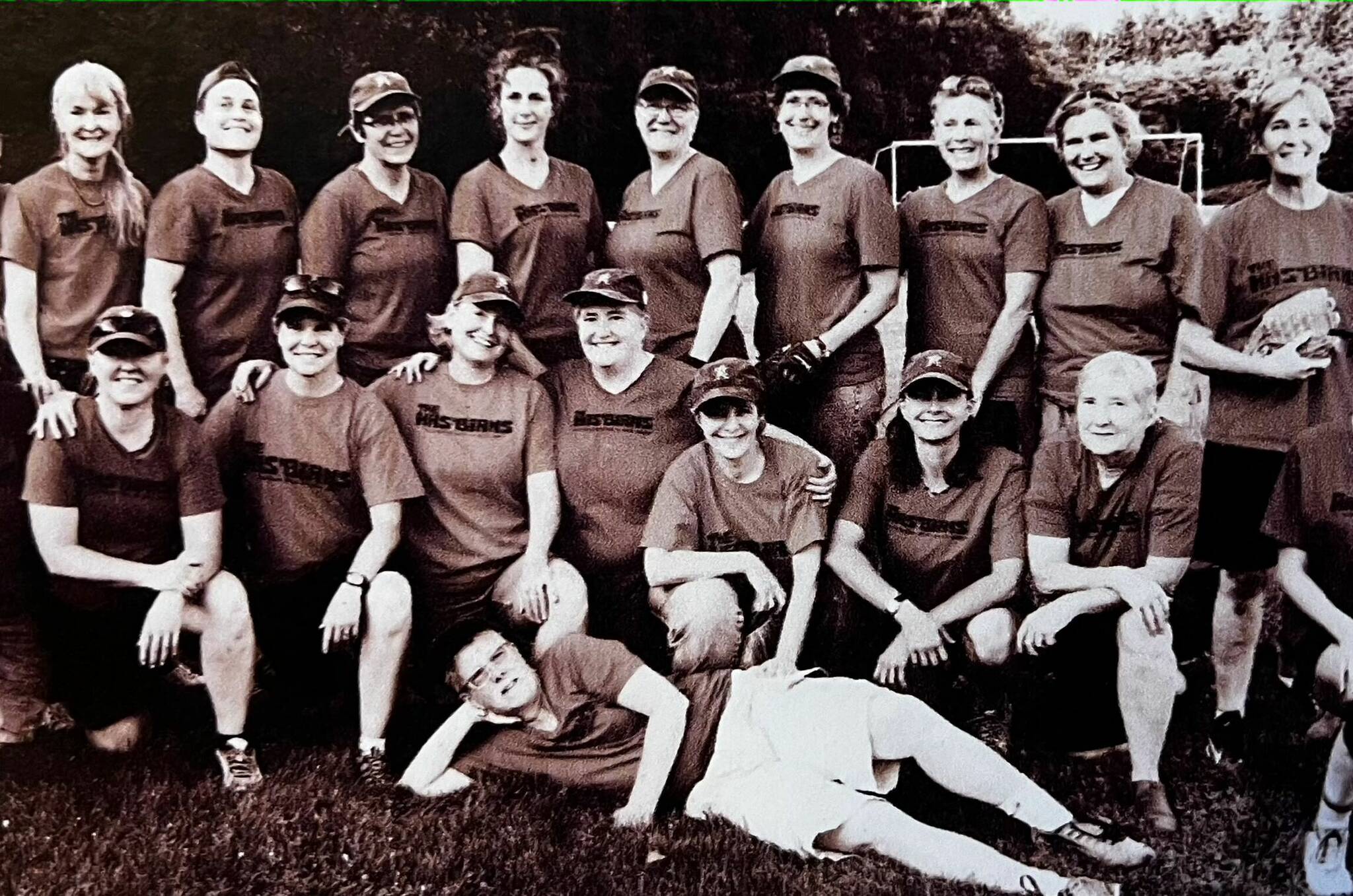Vashon is considered, as Islander Randy Marinez said, “a comfortable place to be comfortably out.”
Beginning in the 1970s and 1980s Vashon began to develop a significant community of what would come to be known as LGBTQIA2S+ residents. Islanders have traditionally adopted a “live-and-let-live” approach, and have accepted individuals, as Roland Carey noted in his Isle of the Sea Breezers: “Nonconformity is accepted on the island, but only as long as that nonconformity doesn’t interfere with the nonconformity of someone else…”
Vashon’s LGBTQIA2S+ residents have felt turmoil, despite the island serving as a haven for many of them. Marian Fitch and her partner MaryLee Fraser were harassed after Fitch accepted a job in 1947 as the editor of the Island Views newspaper. Nancy Yount faced controversy as the openly lesbian pastor of Vashon United Methodist Church from 2005 to 2006.
And this summer, queer islanders and allies formed “Not on Our Island,” an anti-hate group, after videos posted by Abbot Tryphon of the All-Merciful Saviour Monastery equated Pride Month with the biblical sin of pride and shared pictures of rainbow flags at island residences.
While islanders have not always been accepting of LGBTQIA2S+ individuals, that began to change in the last decades of the 20th century. In 2019, the Vashon Heritage Museum hosted the exhibit “IN and OUT: Being LGBTQ on Vashon Island.” Although the exhibit celebrated being out on Vashon, and was a great success, it also fell short of critically examining the full range of issues and individuals that constitute the LGBTQIA2S+ Island community.
The terms used to identify each of Vashon’s diverse communities have changed over the years, from terms like Negro to African American to Black, Mexican American to Chicano to Latino to Latinx, and LGBTQ to LGBTQ+ to LGBTQIA2S+.
Though any classifications of human beings are fraught with misunderstandings, resentments, and the blurring of differences, these efforts represent our ability to develop language that is more accurate and inclusive, and less prejudicial. Many in the queer community eschew the idea of labels altogether.
Islanders often ask how many people who identify as LGBTQIA2S+ live on the island. This question is difficult if not impossible to answer because our primary data source, the U.S. Census, does not directly ask that question. The Census instead asks respondents to describe their relationship to everyone else in their household.
Beginning in 2000, the Census reported responses showing same-sex partners. By the time of the 2010 Census, same-sex marriage was starting to become legal state by state but was not common. It was not until 2015 that the U.S. Supreme Court legalized same-sex marriage in all remaining states where it was not already legal. In the 2020 Census, responses were tracked for both same-sex partners and married couples.
There has been a change in the reported numbers of same-sex partners on Vashon over these thirty years. In 2000, 2.3% of households consisted of same-sex partners. This had increased to 5.5% by 2010, and the latest 2020 Census reported 6.4% of households contained either same-sex partners or married couples.
This trend in data led the Beachcomber to declare in an August 10, 2011 article that “Same-sex couples are one of Vashon’s fastest-growing demographics,” and that the island was “home to the highest concentration of same-sex couples in the state” — higher even than Seattle.
This was tangible evidence for many that the island is generally an accepting place for LGBTQIA2S+ individuals and families, and that the numbers of these individuals and families were increasing.
The difficulty with using Census data, of course, is that not all LGBTQIA2S+ individuals are in same-sex committed relationships. The Census does not ask individuals if they identify as LGBTQAI2S+. As a result, the Census only provides a partial count of this population on the Island.
What we do know is that for the entire United States, the 2020 Census reported that 1.7% of households responded as same-sex spouses or same-sex unmarried partners. For Washington State, that number was 2.1 %, and for King County 2.2%. Vashon at 6.4% is nearly four times the national average, and three times what is reported in Washington State and King County.
Given the reported household statistics, it might be reasonable to say that LGBTQAI2S+ Islanders are a significant and growing part of the Vashon community. Along with this increase come changing attitudes which reflect these changing numbers.
The Hasbian’s women’s softball team of the 1990s represents that early growing population of lesbians and gays on the island who were quietly out of the closet but not highly visible. And the Pride banners at Vashon Center for the Arts this year represent how central to island identify the LGBTQIA2S+ population has become.
When a major cultural institution like VCA proudly displays Pride banners along Vashon Highway as part of the celebration of Pride Month, that demonstrates not just acceptance but celebration of our changing community — even if that celebration is not universal.



